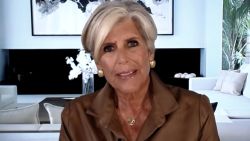The marriage of SunTrust and BB&T received the blessing of financial watchdogs on Tuesday, paving the way for the formation of America’s sixth-largest commercial bank.
The approval by the Federal Reserve and the FDIC removes the final obstacle facing the biggest bank merger since the 2008 financial crisis – a crisis that was worsened by the creation of mega banks.
The deal, easily the biggest ever to be considered by the FDIC, received unanimous approval from the agency, although one official warned of “very significant financial stability risks.”
The combined company, which will be based in Charlotte, will serve about 10 million US consumer households and lay claim to around $330 billion in deposits.
The merger, expected to be completed on December 6, means the eventual end of the BB&T (BBT) and SunTrust (STI) brands, which have a combined 275 years of history. The banks said those brands will be phased out over the next two years to make room for Truist, the new brand name the companies rolled out in June.
BB&T and SunTrust said that customers will continue to be served through their respective branches, websites, mobile apps and advisers as the systems are integrated.
FDIC official flags concerns over merger
The merger faced skepticism from Democrats such as Senator Elizabeth Warren and Representative Maxine Waters who urged regulators to review the deal closely.
Regulators are under pressure not to allow for the creation of big banks that could pose a risk to the broader economy should they hit financial trouble.
Lax regulation paved the way for the creation of mega banks like Citigroup (C) that required epic bailouts in 2008 during the financial crisis. Large regional banks Washington Mutual and IndyMac both failed that year as well. The collapse of IndyMac was the costliest failure in FDIC history, wiping out more than $12 billion from the agency’s deposit insurance fund.
Martin Gruenberg, a member of the FDIC’s board of directors, voted in favor of the SunTrust-BB&T deal despite expressing “concerns” with the merger’s “potential risk to financial stability.”
Gruenberg, the former chairman of the FDIC, published a statement citing challenges such as the companies’ large branch network, substantial IT systems, ownership of a large insurance broker and heavy reliance on uninsured deposits. He also warned that “in the event of failure” of the newly-combined bank, the universe of potential acquirers “would be quite limited for an institution of this size.”
“There is always a risk of a repeat of what occurred earlier, and banks could become larger,” James Rosener, a partner at the law firm Pepper Hamilton, said in an email.
However, Rosener said that recent regulations “seem to have reduced the risk” from activities banks engaged in before the crisis such as proprietary trading.
The Fed also approved the merger after holding two public meetings to hear testimony. To ease competitive concerns, BB&T agreed to sell 30 branches and more than $2.4 billion in deposits.
The green light from the Fed came even as the central bank issued a consent order against SunTrust for “unfair and deceptive practices,” including enrolling business customers to a fraud reporting tool and other products without their consent between 2013 and 2017. The Fed said SunTrust has repaid about $8.8 million in fees to customers.
“We are committed to delivering our products and services accurately and transparently,” SunTrust said in a statement. “When we make a mistake, we work very hard to make it right.”
Once the deal closes, Truist common shares will begin trading on the New York Stock Exchange under the ticker symbol “TFC.”





















